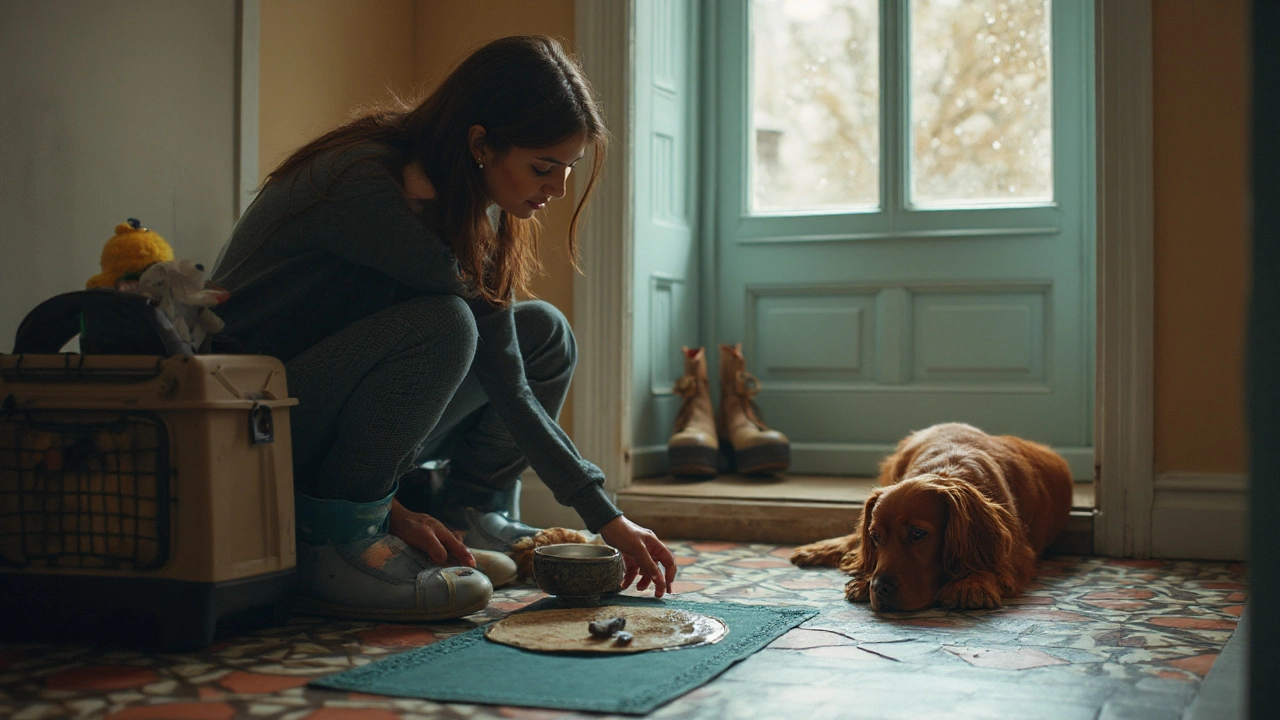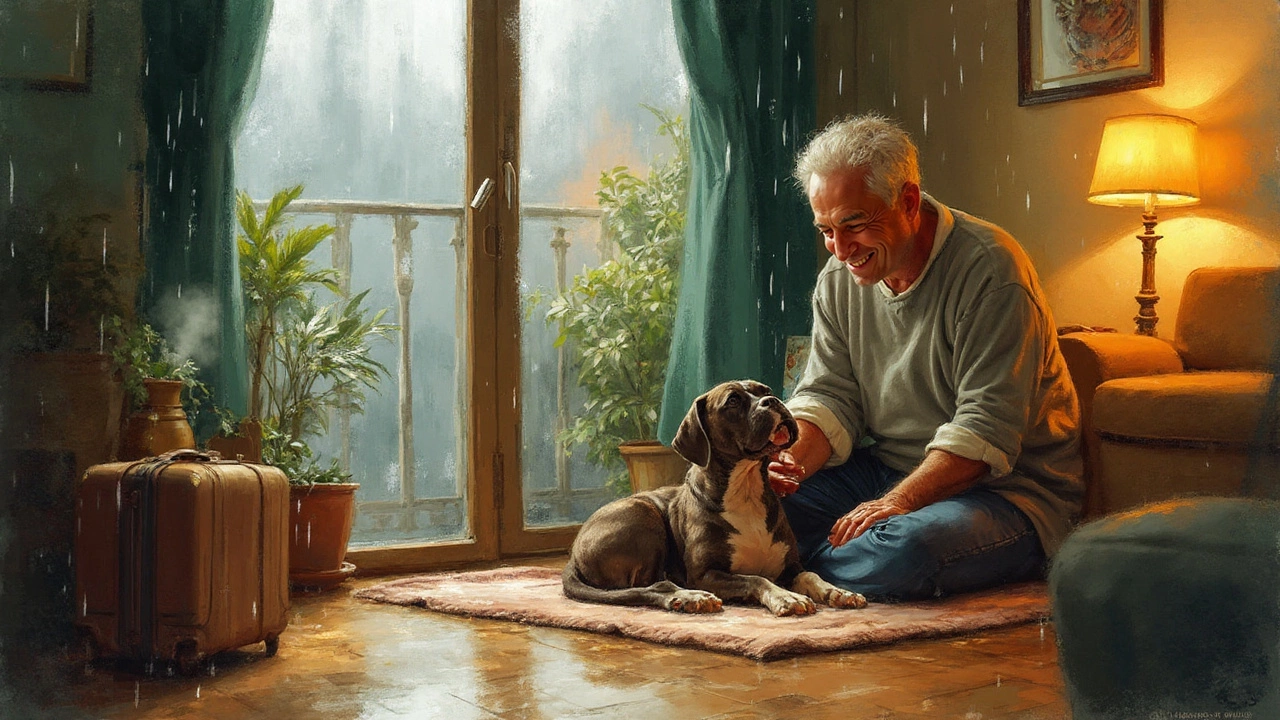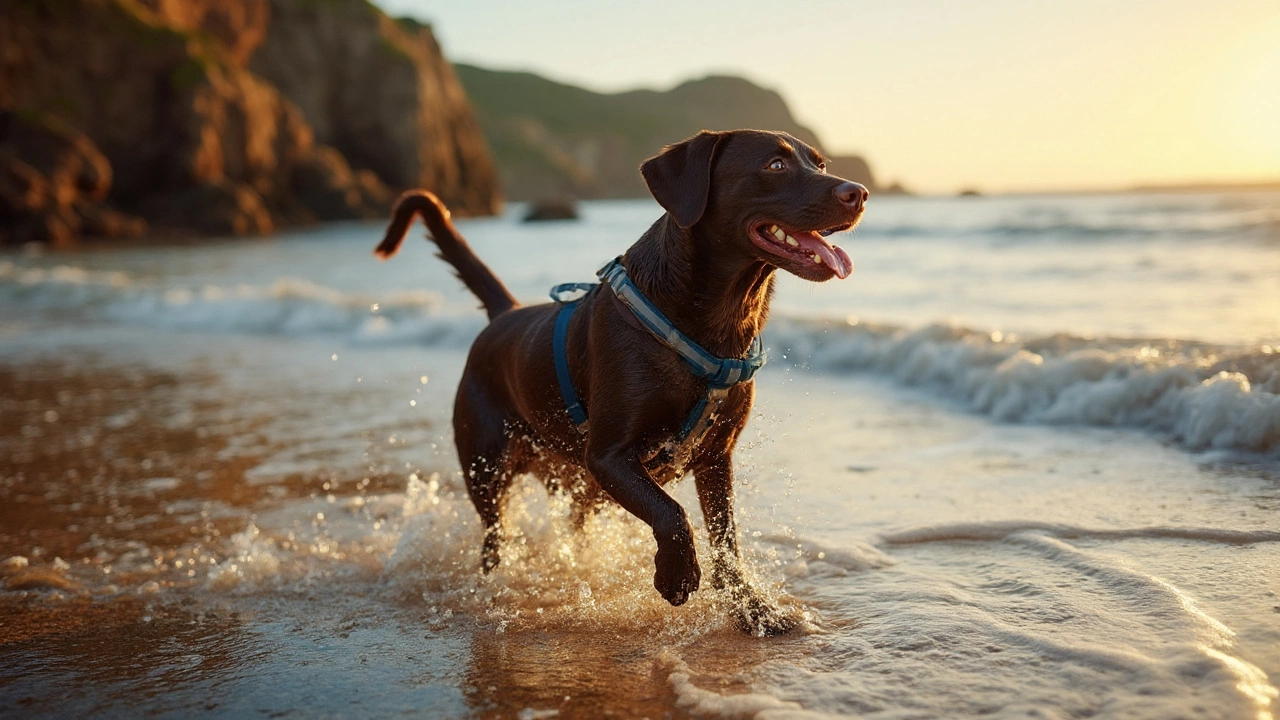A holiday your dog hates isn’t a holiday-it’s a logistics exercise with guilt. The honest answer to “Do dogs enjoy going on holiday?” is: some absolutely do, some cope, and some would rather stay home on your shoes. The difference comes down to temperament, training, health, and how you plan the trip.
Dog is a domestic species (Canis familiaris) that thrives on predictable routines, social bonding with humans, and environmental control; enjoyment is signaled by relaxed body language, play, appetite, and normal sleep. When you change routine with travel, you’re changing noise, smells, temperature, schedules, and rules. Some dogs read that as adventure. Others read it as chaos.
Holiday travel is a leisure trip away from home with one or more overnight stays; attributes include duration (2-14 days typical), transport mode (car, plane, train), and lodging type (hotel, rental, camping). The goal isn’t just bringing your dog; it’s making the new routine feel safe and rewarding.
TL;DR
- Yes-many dogs enjoy holidays when the plan fits their temperament and training. Others are happier at home with a sitter.
- Look for relaxed body language, steady appetite, curiosity, and restful sleep. Avoid persistent panting, pacing, hiding, or diarrhea.
- Road trips with familiar routines are the lowest-stress option for most pet dogs; air cargo is the highest risk and stress.
- Do a “mini-trip” test weekend, prep a travel crate, and stick to your dog’s feeding/sleep schedule within ±1 hour.
- If your dog is anxious, brachycephalic, very young, or very old, consider a trusted home sitter instead of travel.
What “enjoyment” looks like for dogs
Dogs don’t journal about Capri. They communicate with their bodies. Enjoyment looks like soft eyes, normal blinking, loose tail wagging at mid-height, normal sniffing, and the confidence to rest in a new space. You’ll see playful bows and a dog who can settle on a mat and actually nap.
Stress reads differently: tight commissures (lip corners), dilated pupils, pinned ears, whale eye, fast scanning, refusal of food, panting in cool rooms, yawns that come in clusters, shedding clumps, and GI changes. If those signs persist past day two, your dog isn’t “warming up”-they’re coping.
Separation anxiety is a panic disorder where a dog experiences distress when left alone; indicators include vocalization, destruction near exits, drooling, and self-injury. New places can amplify it, so plan near-zero alone time if this is your dog.
Which dogs tend to enjoy holidays?
- Confident, socialized adults (2-8 years) with predictable bathroom and sleep habits.
- Dogs accustomed to car rides and sleeping in new places (e.g., friends’ houses, training trials).
- Low-noise-reactive temperaments; dogs who recover quickly after surprises.
Who struggles? Puppies still house-training, seniors with mobility or cognitive changes, noise-sensitive dogs, and brachycephalic breeds (short-nosed) in heat or altitude. Motion sickness hits roughly 1 in 5 dogs, especially youngsters, and can turn the whole experience sour.
The science in plain English
Short-term novelty can be enriching-sniffing new trails is like binge-watching season one of a hit show. But prolonged loss of control spikes stress hormones. In boarding studies, salivary cortisol often rises on day one and settles over 3-5 days in well-run facilities, slower in noisy ones. Heart rate variability (a calm marker) improves when dogs can predict feeding, walks, and sleep windows. Translation: keep the routine, change the view.
Air travel adds hypoxia risk for certain breeds and thermal stress during loading. Professional bodies consistently advise against sedatives for flights because they impair thermoregulation and balance.
AVMA the American Veterinary Medical Association; advises against tranquilizers for air travel and emphasizes acclimated crates and health screening. That dovetails with the IATA Live Animals Regulations global airline standard for animal transport; requires rigid, ventilated, correctly sized kennels and no sedation.
Quick decision guide: bring your dog or book a sitter?
- Trip style: hiking cabin with a car? Likely dog-joy. Museum-heavy city weekend with taxis and long dinners? Better for a sitter.
- Alone time: if more than 2 hours/day alone in a strange room, lean sitter.
- Heat, altitude, ferries, flights: stack risk? Choose home care.
- Medical constraints: chronic meds, mobility aids, or seizure history? Build a robust care plan or stay local.
Travel modes compared
| Option | Stress level | Control of routine | Risk profile | Best for | Not ideal for |
|---|---|---|---|---|---|
| Road trip (car) | Low-moderate | High | Car sickness, heat if parked | Most adult dogs | Severe motion sickness |
| Flight (in cabin) | Moderate | Medium | Noise, delays; size limits | Tiny breeds in soft carriers | Dogs over airline size limits |
| Flight (cargo) | High | Low | Thermal, loading/transfer stress | Essential moves only | Brachycephalics, seniors |
| Home pet sitter | Low | High | Sitter quality varies | Routine-loving dogs | Severe stranger fear |
| Boarding kennel | Moderate-high | Medium | Noise, disease exposure | Social butterflies | Noise-sensitive dogs |
| Local staycation | Low | High | Minimal | All dogs, esp. seniors | Owners craving far travel |
How to tell if your dog will enjoy the trip (before you book)
- Do a 48‑hour test weekend nearby. Keep your home routine within ±1 hour. Track appetite, sleep, bathroom, and behavior.
- Car conditioning: 10 short drives with treats at the destination (park, sniff walk). If nausea hits, talk to your vet about maropitant (trade name Cerenia) and ginger timing.
- Crate happy test: can your dog rest 60 minutes in a travel crate with a chew? If not, build up with 5-10 minute increments.
- Noise exposure: play low-volume airport/train sounds while feeding. Raise volume slowly over sessions if your dog stays relaxed.
- Alone-time check: if your dog panics when you shower in a hotel, plan zero solo time or skip the trip.
Documents, rules, and gear you actually need
Paperwork varies by country and airline, but these pillars don’t change.
Rabies vaccination core immunization often required for travel; validity 1-3 years depending on vaccine; many borders require 21 days after primary dose. Pair it with a readable microchip permanent ID (ISO 11784/11785 preferred) implanted subcutaneously; required before rabies in many jurisdictions.
For cross-border moves, check your national authority-e.g., USDA APHIS U.S. agency that endorses international pet health certificates and lists destination requirements. If you’re UK‑bound, see DEFRA Pet Travel Scheme rules governing microchip, rabies, tapeworm treatment (for some countries), and approved routes.
Crate matters more than cute carriers. An IATA-compliant travel crate rigid kennel sized so the dog stands without ears touching, turns, and lies in natural position; secured door, ventilated on three sides (domestic) or four (international). Practice weeks before you travel.

Packing list (beyond the obvious)
- Two days of extra food and water, pre-portioned; collapsible bowl; bottle for emergencies.
- Medications with a written schedule; photo of prescriptions.
- Familiar scent: unwashed T‑shirt in the crate; favorite bed or mat.
- Chews and food puzzles to settle in new rooms.
- Long line and a spare leash; ID tags with your phone and email.
- Poop bags, enzyme cleaner, small towel, tick remover.
- First-aid basics: bandage wrap, antiseptic, vet records in your phone.
- Climate gear: cooling vest or coat/booties based on destination.
Design a dog‑first itinerary
Use a simple rule: 1-2 “dog choice” activities for every human-only block. Morning sniffaris before people-heavy plans, midday rest in a cool, dark room, evening walk somewhere quiet. Keep mealtimes steady. Pack shade and water. On hot days, choose surfaces you can stand on barefoot; if it burns you, it burns paws.
Choose lodging that actually welcomes dogs, not just tolerates them. A ground-floor rental with a small yard beats a hotel with long elevator waits. Confirm house rules: unattended time, furniture, and local leash laws.
Pet-friendly accommodation lodging that permits dogs; key attributes include size limits, fees, access to outdoor relief, and quiet hours. Ask about nearby relief areas and sound insulation.
Car, plane, train: how to keep stress low
- Car: Secure with a crash-tested harness or rigid crate; stop every 2-3 hours; no heads out of the window; never leave in a parked car. For nausea, your vet may prescribe maropitant 2 hours before departure.
- Plane (cabin): Book direct flights, aim for off-peak hours, and line the carrier with a thin absorbent pad. No sedatives; consider pheromone spray on bedding and heavy sniff-walks pre-flight.
- Plane (cargo): Treat as a relocation, not recreation. Fly temperate seasons, early/late to avoid heat, and avoid tight connections. Bolt the crate door with plastic fasteners as allowed.
- Train/ferry: Check pet carriages and muzzling rules in advance. Bring a mat to define your dog’s spot and a chew for takeoff/embark.
When to skip bringing your dog
If your dog has a panic disorder, barks through hotel walls, or shuts down in new places, they’re telling you the truth. Book a sitter who will keep routines, send updates, and do a meet-and-greet first. Some dogs blossom at home; they don’t need a stamp in their paw-passport to be happy.
Proof your plan with a simple checklist
- Health check: clear vet exam within 30 days; meds packed; parasite prevention current.
- Docs: microchip number recorded; rabies valid through return date; destination certificate confirmed.
- Crate: IATA-compliant sizing; 2-week acclimation complete; ID on crate.
- Schedule: feeding and sleep within ±1 hour of home; daily sniff‑walk; quiet time block.
- Lodging: ground-floor or easy outdoor access; dog rules confirmed in writing.
- Emergency: nearest 24/7 vet saved on your phone; backup handler contact attached to collar.
Related concepts
Curious to go deeper? These connected topics unlock smoother trips: body language, crate games, scentwork for decompression, heat safety, and travel insurance that covers pets. They sit in the broader cluster of pet travel, dog health, and training basics.
Credible standards and who says what
For air transport guidance, follow the IATA Live Animals Regulations airline rulebook for animal carriage; crate specs, breed restrictions, and handling procedures.. Veterinary positions from the AVMA which discourages sedatives for flights and stresses acclimation and health screens and the WSAVA global veterinary association offering travel and welfare guidance align around welfare first.
One last nudge: build your trip around dog travel needs, not the other way around. If you do, your dog won’t just tolerate the holiday-they’ll wag through it.
Frequently Asked Questions
How can I tell if my dog is happy on holiday?
Look for soft eyes, relaxed jaw, neutral tail wag, curiosity, and the ability to nap in new spaces. Appetite and bathroom habits stay normal, and your dog will choose to settle near you instead of pacing, hiding, or whining. If stress signs persist past 48 hours-panting in cool rooms, refusing food, diarrhea-adjust plans or consider heading home.
Is it cruel to fly a dog for vacation?
For vacation, cargo flights are rarely worth the welfare risk. Professional guidelines (IATA and AVMA) advise no sedation and stress careful crate acclimation; even then, heat, delays, and handling are variables you can’t control. Cabin flights for tiny dogs can be reasonable if your dog is crate-comfortable and the trip is essential to your family’s plan. When in doubt, choose a trusted home sitter.
What size should a travel crate be?
For IATA-style crates, your dog must stand without ears touching the roof, turn freely, and lie in a natural position. Measure nose to base of tail for length and floor to top of head or ears (whichever is higher) for height; add a few centimeters for comfort. Ventilation should cover three sides for domestic and four sides for international. Rigid walls and a secure door are non-negotiable.
Can I give my dog something to calm them for flights or long drives?
Avoid sedatives for flights-they can impair balance and temperature control and are discouraged by the AVMA and airlines. For cars, your vet may suggest options: maropitant for motion sickness, and behavior plans like crate games, pheromone products, and pre-trip exercise. Test any medication or strategy at home first so there are no surprises en route.
Will my dog miss me if I leave them with a sitter instead?
They’ll notice you’re gone, but many dogs settle well with consistent routines and a familiar home environment. A meet-and-greet, a shirt with your scent, and a written schedule help. Daily updates with photos reassure you; your dog cares more about predictable feeding, walks, and sleep than the zip code you’re in.
How much alone time is okay in a hotel or rental?
Aim for under two hours total per day in a new place, and only if your dog can relax alone at home first. Use a camera to confirm they’re sleeping, not pacing or vocalizing. Many accommodations forbid unattended pets, so check rules, and leave a phone number with the front desk in case your dog vocalizes.
Do dogs get jet lag?
Dogs do experience circadian disruption after time zone changes. Most adapt within a few days if you shift feeding and walks by 30-60 minutes per day toward local time. Keep nights quiet and dark, morning light bright, and maintain your usual pre-bed routine to speed the reset.
Is a kennel or a home sitter less stressful?
Home sitters usually win for routine-loving dogs because the environment stays familiar and quiet. Well-run kennels can work for social, noise-tolerant dogs and may offer structured play. Visit any kennel in advance, ask about staff ratios, ventilation, and disease protocols, and do a one-night trial to see how your dog responds.
What temperature is too hot or cold for travel?
Avoid exertion above 85°F/29°C, and never leave a dog in a parked car even at 70°F/21°C-interior temps rocket fast. In cold, small and short-coated dogs may need coats below 45°F/7°C. For flights, many airlines embargo pets during heat waves or deep freezes; check seasonal rules before you book.

Next steps and troubleshooting
- If your dog loves new places: build a road-trip plan with two activity windows daily and one nap block. Book ground-floor, dog-welcoming lodging.
- If your dog is anxious: choose a home sitter, run practice visits, and leave a daily routine script. Revisit travel later after training.
- If motion sickness hits: test vet-prescribed meds at home; feed smaller meals; position the crate forward-facing and low in the car.
- If your plans require flights: consult your vet 30-45 days out, confirm crate specs with the airline, and pick non-peak flights.
- For seniors or brachycephalics: prefer local staycations with quiet trails, short drives, and climate-controlled rest.
